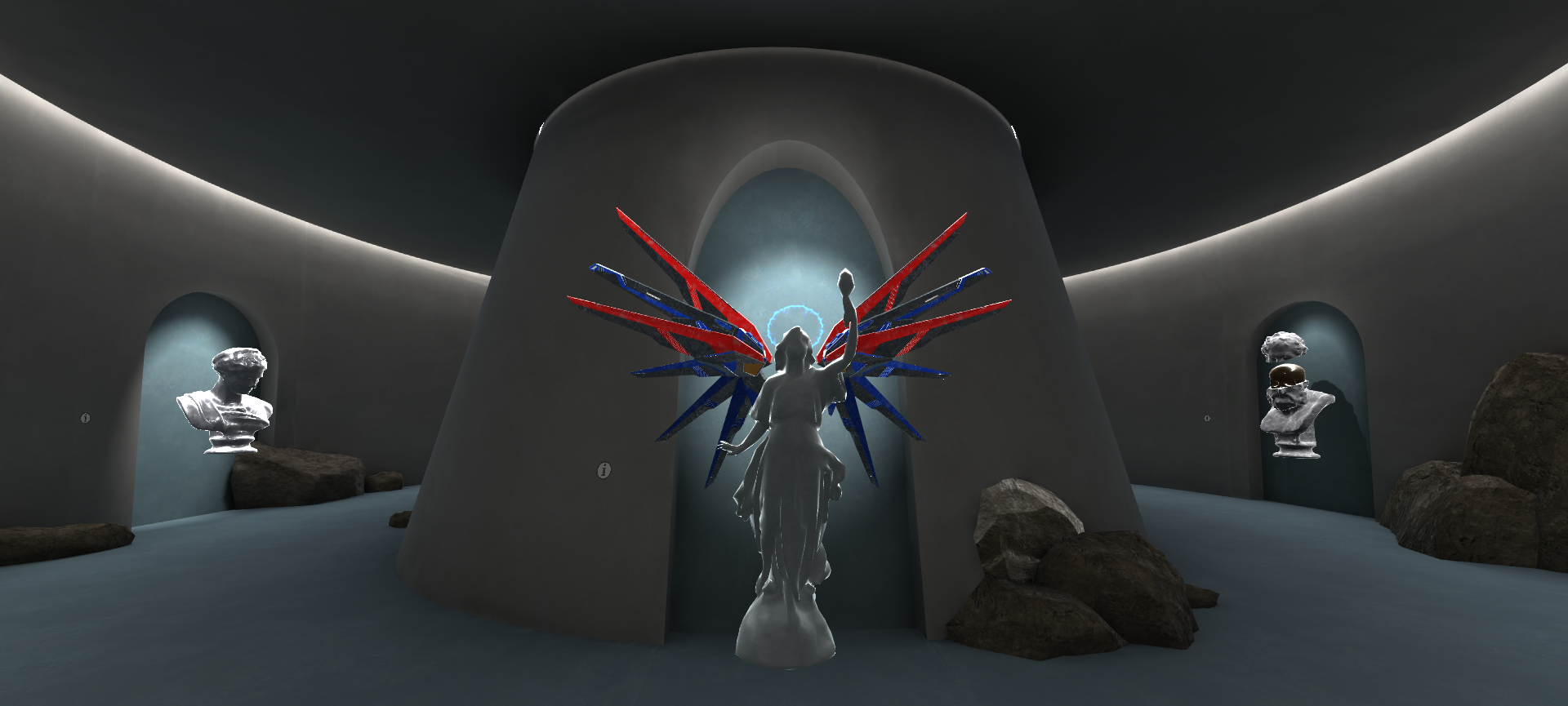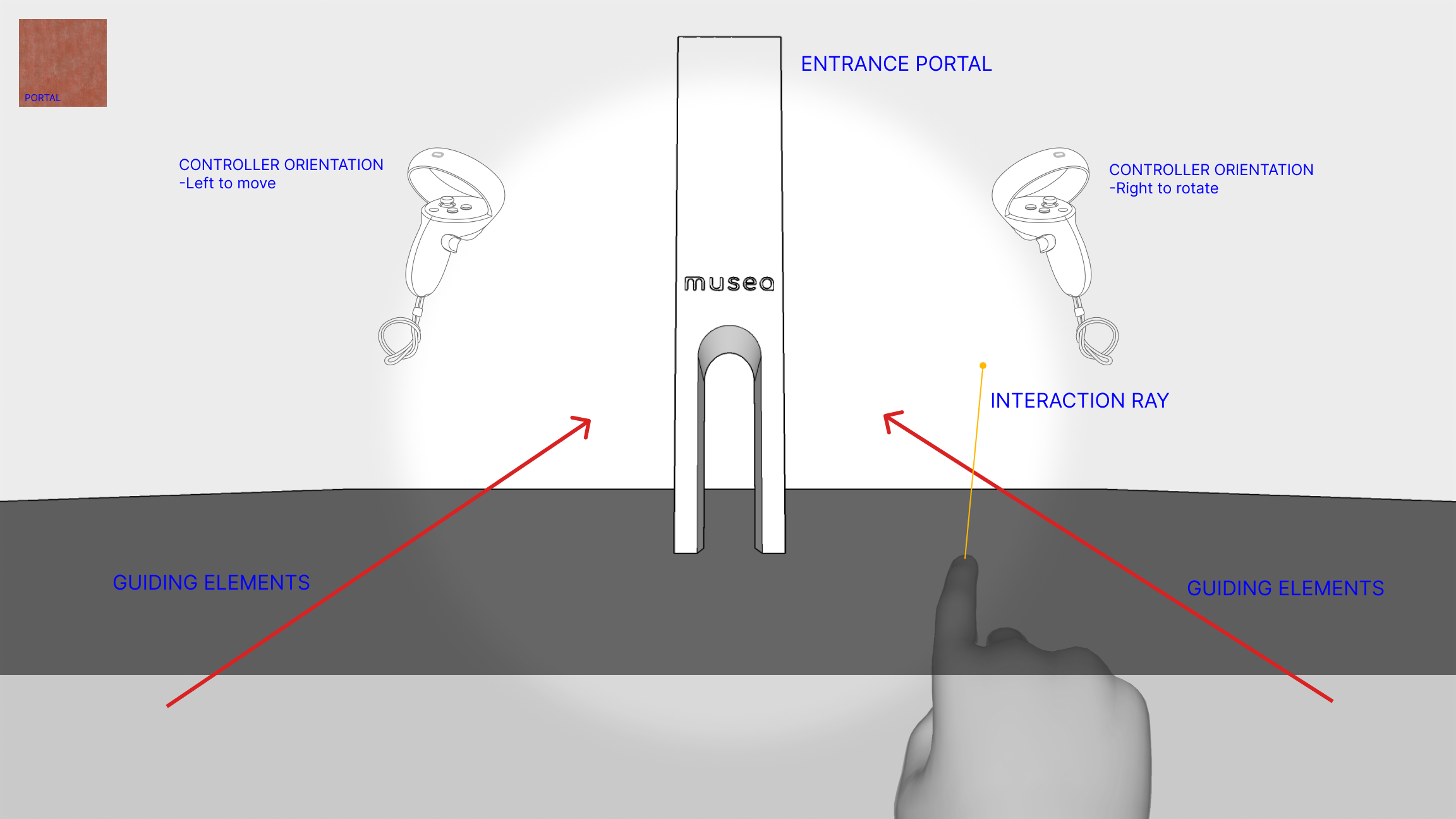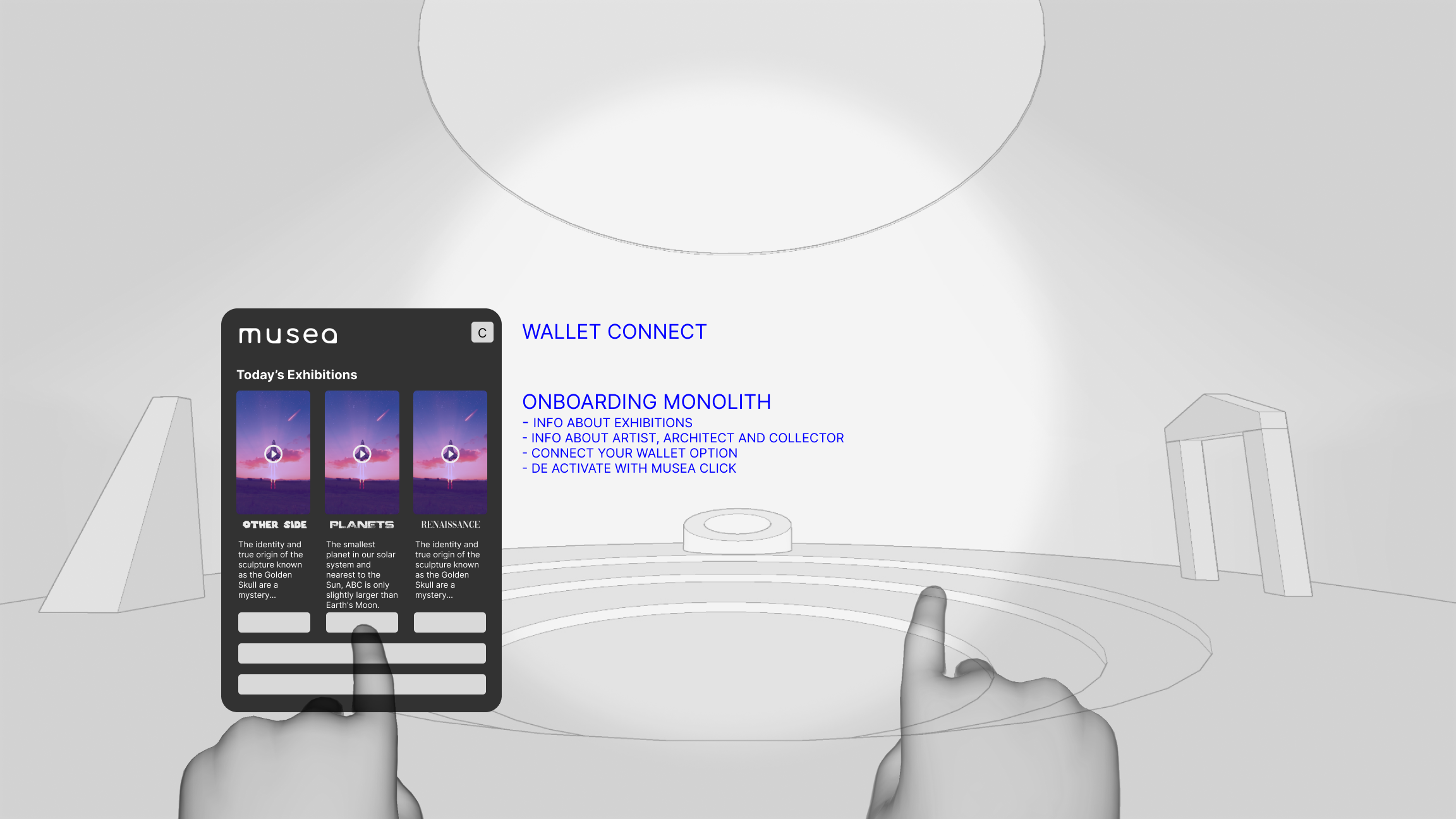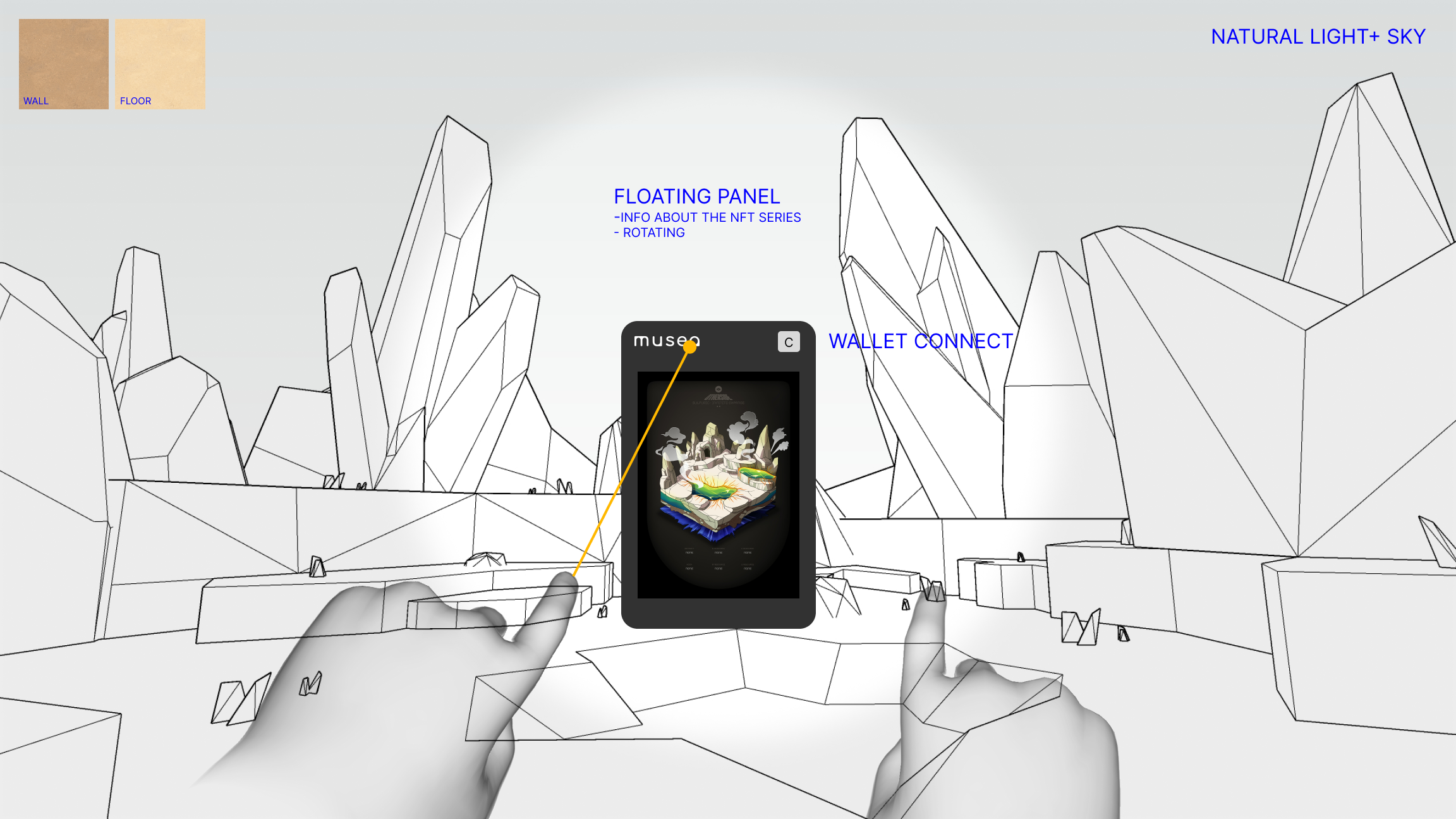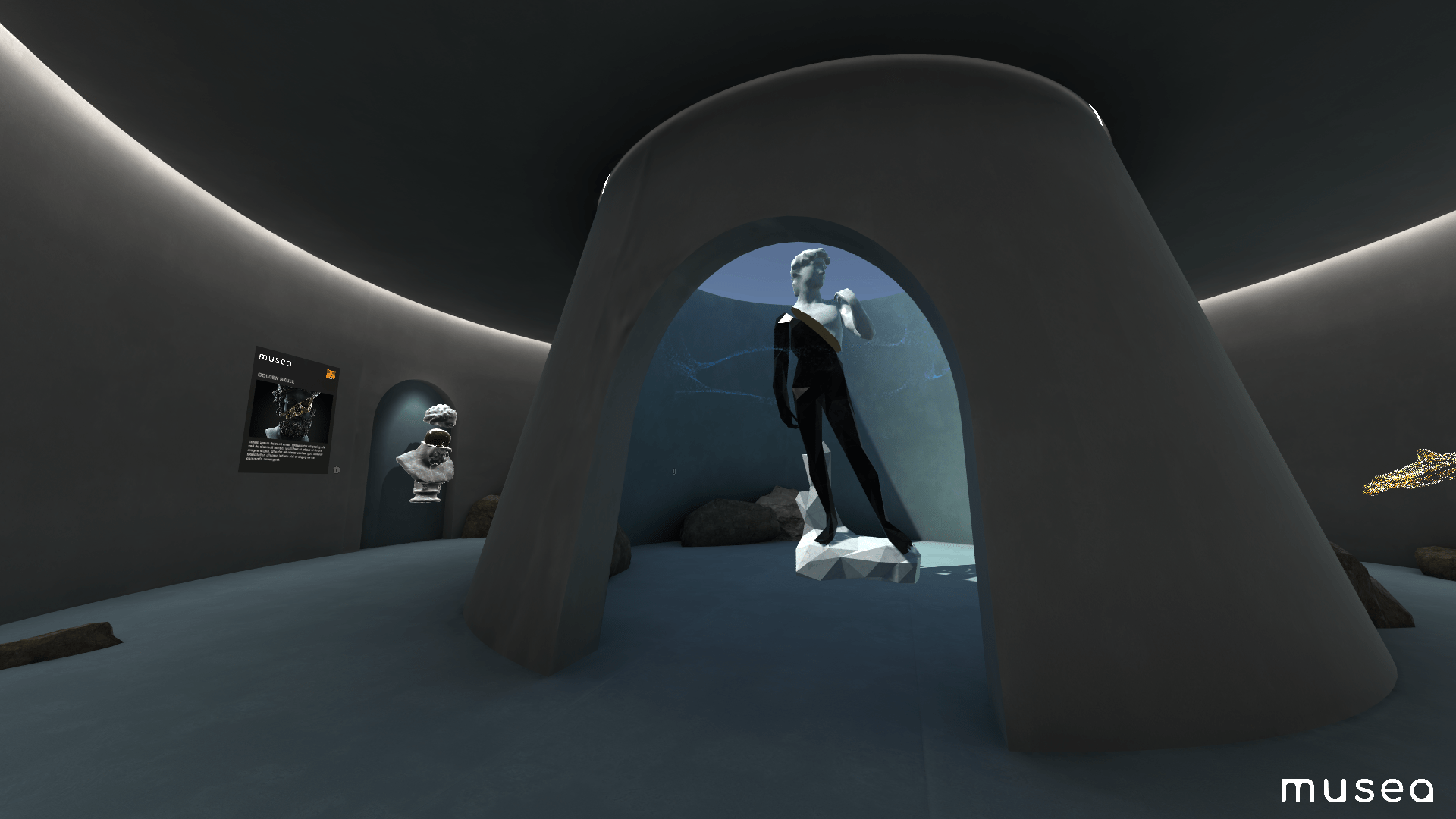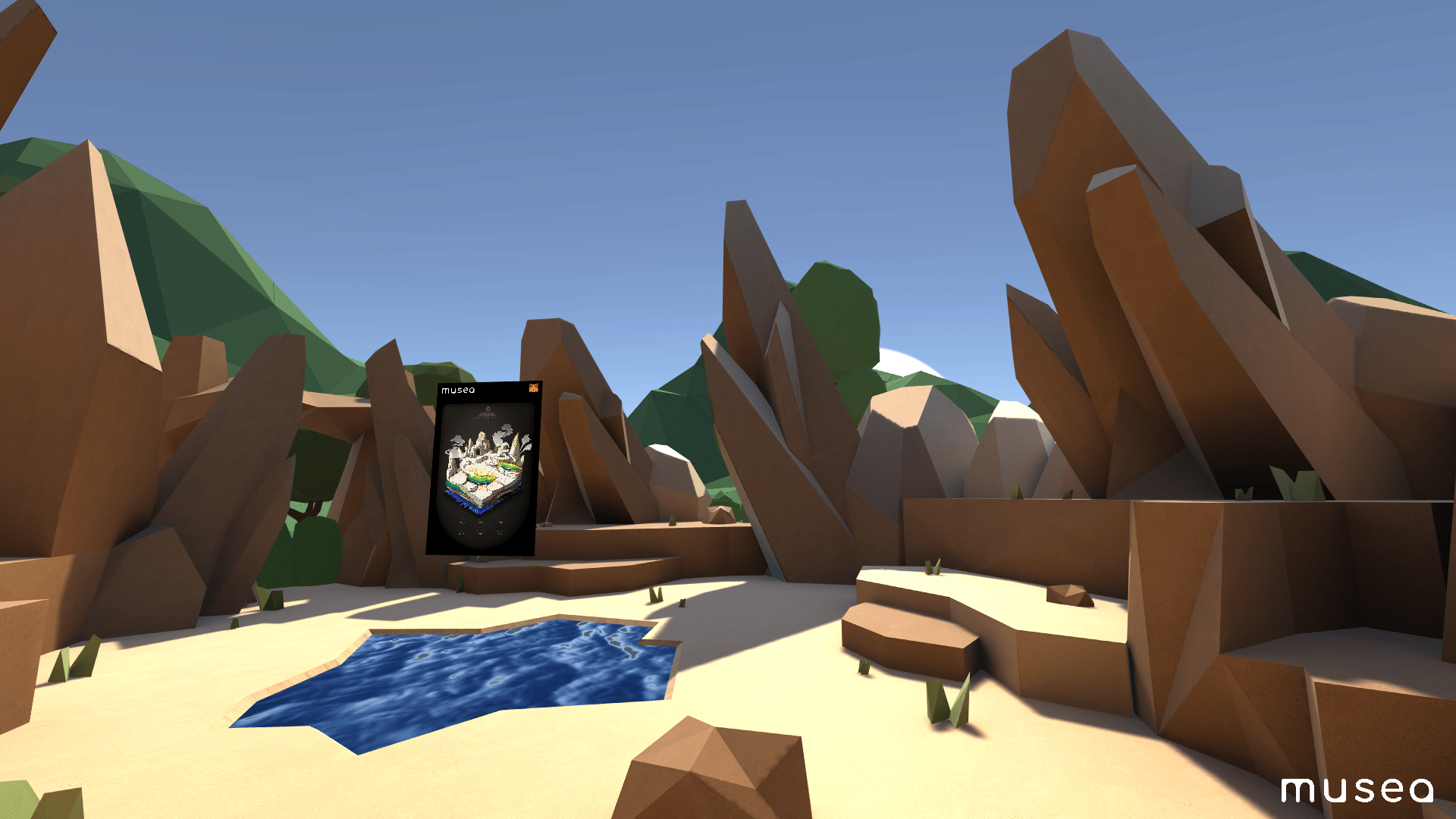CONCEPT / UNITY / XR
musea
OVERVIEW
Online platform to create, collect and trade digital art in virtual reality.
Online platform to create, collect and trade digital art in virtual reality.
Role
Research
3D Assets
UX/UI
Visual Design
Tools
Unity
Figma
Photoshop
Sketch up
Duration
50 hours
Rise of NFTs, 3D objects, and personalized galleries.
Rise of NFTs, 3D objects, and personalized galleries.
Extended reality, digital art, and digital commodities are highly energetic fields that are constantly changing.
Musea is responding to the emergent needs of the new digital era of the art scene by helping to create new avenues for how we collaborate and create.

The term "Digital Commodity" mainly represents digital currencies. However, the mass adoption of digital assets in the form of "Non-Fungible Tokens" shapes a new artistic era of creativity.

Creating digital representations of real-world objects and environments will be crucial for the near future in the scope of real-time simulation, spatial computing, design, and so on.

Extended Reality or "XR" is the umbrella term that covers the full spectrum of realities. XR is fundamentally changing our interaction with media and defining new modalities for the near future.
DISCOVERY
Digital exhibition spaces and metaverse museums are here. But how?
There is an evolving pattern of modalities in metaverse exhibition spaces:


Ultimately, these metaverse galleries evolve into larger, connected and safe ecosystems with more personalization options.

Early adopters of this metaverse museums have created exhibition spaces that are not different than physical ones. (Spatial)

Then there are more tailored experiences and museum spaces appeared. (Museum of Other Realities)
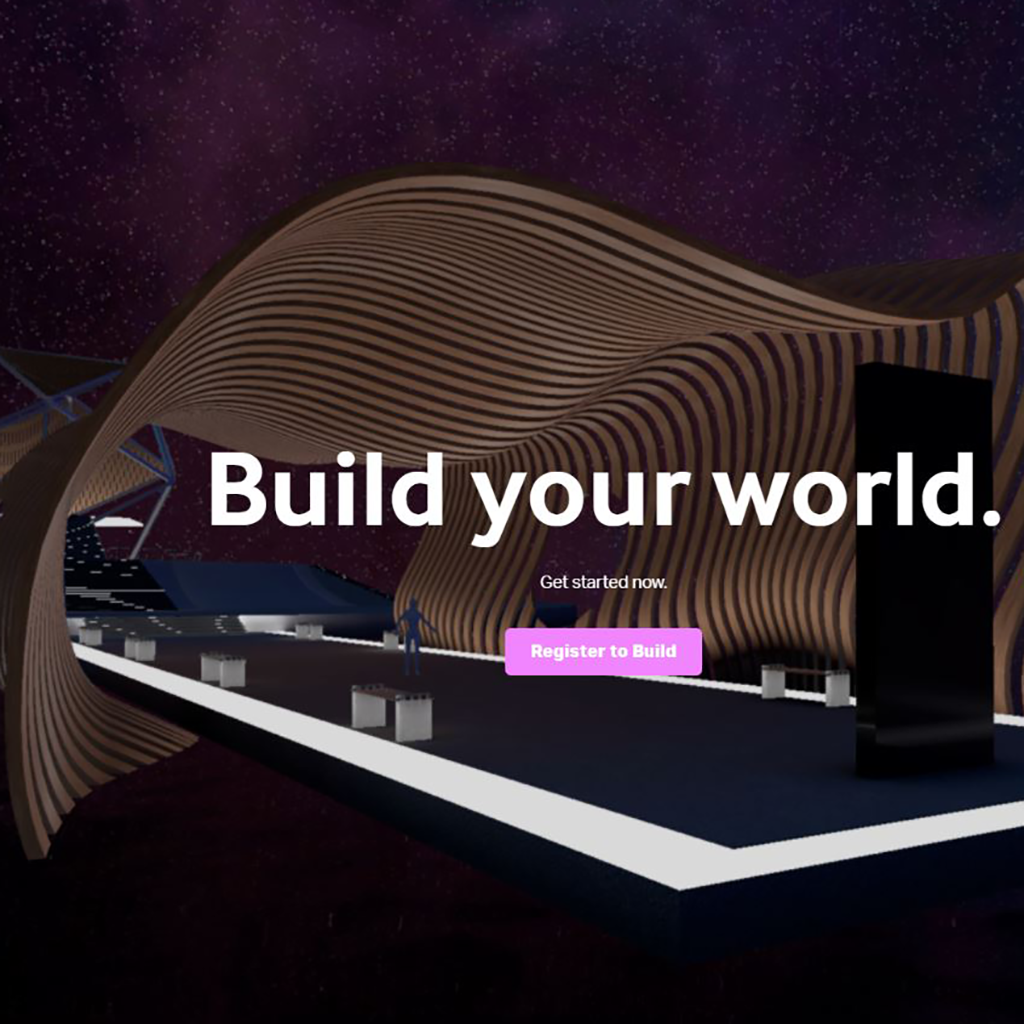
Lately, these ideas evolved into more personalized experiences which allow users to build their own content and ideas. (Monaverse)
How can we build a free art platform for creators that allows personalization and collaboration within a safe digital ecosystem?
In the current Extended Reality landscape, digital galleries can unlock many possibilities and act like a digital cabinet of curiosities for every creator and art lover. With endless personalization options and a safe decentralized ecosystem, digital art galleries can be spaces for discovery, collaboration, curation, and interaction for creative communities.
USER RESEARCH
Artists, Creators, Collectors, and Developers.
To gain more insights into the vibrant environment of metaverse art and extended reality I created a survey and ask questions in several key communities of Digital Artists, NFT Collectors, and XR Developers. This survey helped me to better visualize the critical needs of the metaverse art scene and see the powerful potential of the VR-based digital art scene.
To gain more insights into the vibrant environment of Metaverse Art and Extended Reality surveys were conducted in several key communities of Digital Artists, NFT collectors, and XR Developers.


For creators, having artistic freedom without any institutional boundaries is highly critical. According to the survey, independent art galleries and social media more preferable to established art institutions. With XR technologies creators will have more freedom to imagine, create and distribute their creations.
Which one do you prefer to build a community for your art?

Which one do you prefer to build visibility/recognition for your art?
Which one do you prefer to build visibility or recognition for your art?


Virtual Reality is the favorite reality.
Because of their immersive qualities and capabilities, XR technologies adopted by creators to showcase their work in the last decade. Participants of the survey favor Virtual Reality as the best option for exhibiting their artwork.
Do you think the extended reality is a good way to display your artwork?
Do you think the extended reality is a good way to display your artwork?

Which option would you prefer to display your digital artwork?


Creative collaboration as a virtue of VR.
Dadaist artists believed that the value of art lay not in the work produced but in the act of making and collaborating with others to create new visions of the world. Digital technologies revolutionized our way to collaborate with each other creatively. More than %50 of the participants choose to collaborate with other creative minds while showcasing their artwork.
Which option would you prefer to create an exhibition space for your digital artwork?
Which option would you prefer to create an exhibition space for your digital artwork?

musea should be formed as an independent platform that facilitates collaboration for unique virtual reality experiences.
Creative collaboration as a virtue of VR.
USER JOURNEY
Artist, Architect, Collector and Visitor.
Heroes of musea.
Musea brings four different personas together. Artist, Architect, Collector, and Visitor. These personas have different goals and distinct skill sets while navigating in musea.




IDEATE
Use Case Scenario
In order to build a prototype, I have created a plausible use case scenario. This is an exhibition space for a Collector, who has three visually distinct Digital Artworks and wanted to showcase them together. According to this scenario, a Collector worked with an Architect and creates an interesting set of spaces for artworks from famous Artists and brings them together around a lobby space where he can host some Visitors and other Collectors.
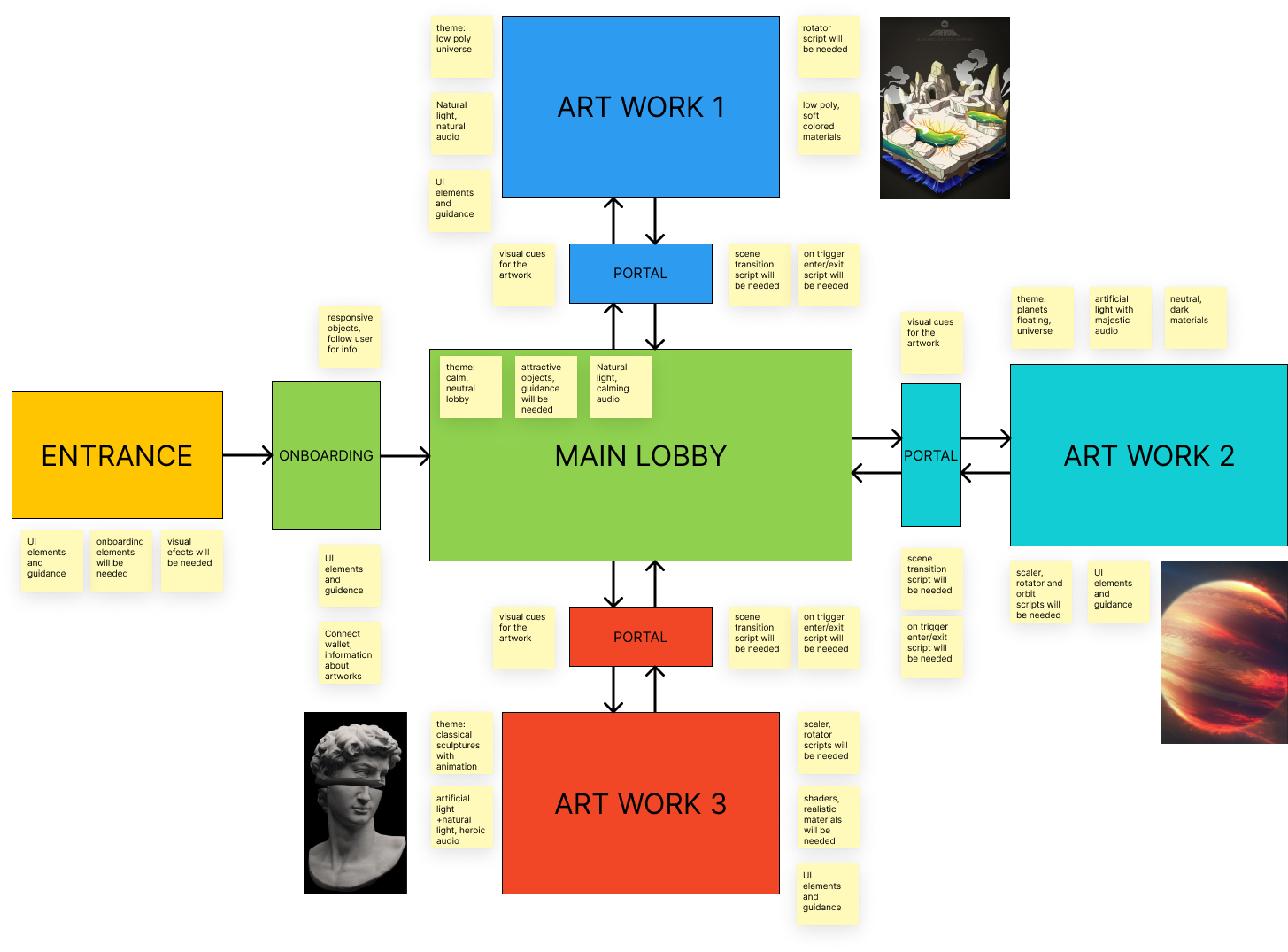
Artwork Themes
I have selected 3 distinctive artwork themes to test how musea can bring a rich variety of artworks and spaces together. Each artwork shapes the design of the exhibition spaces according to its visual style and overall concept. The first artwork based on the NFT series is called Other Side which offers a variety of low poly environments. The second one uses realistic Planets in a futuristic setting. The third one is called Renaissance is a combination of classical sculptures and statues with a futuristic twist.
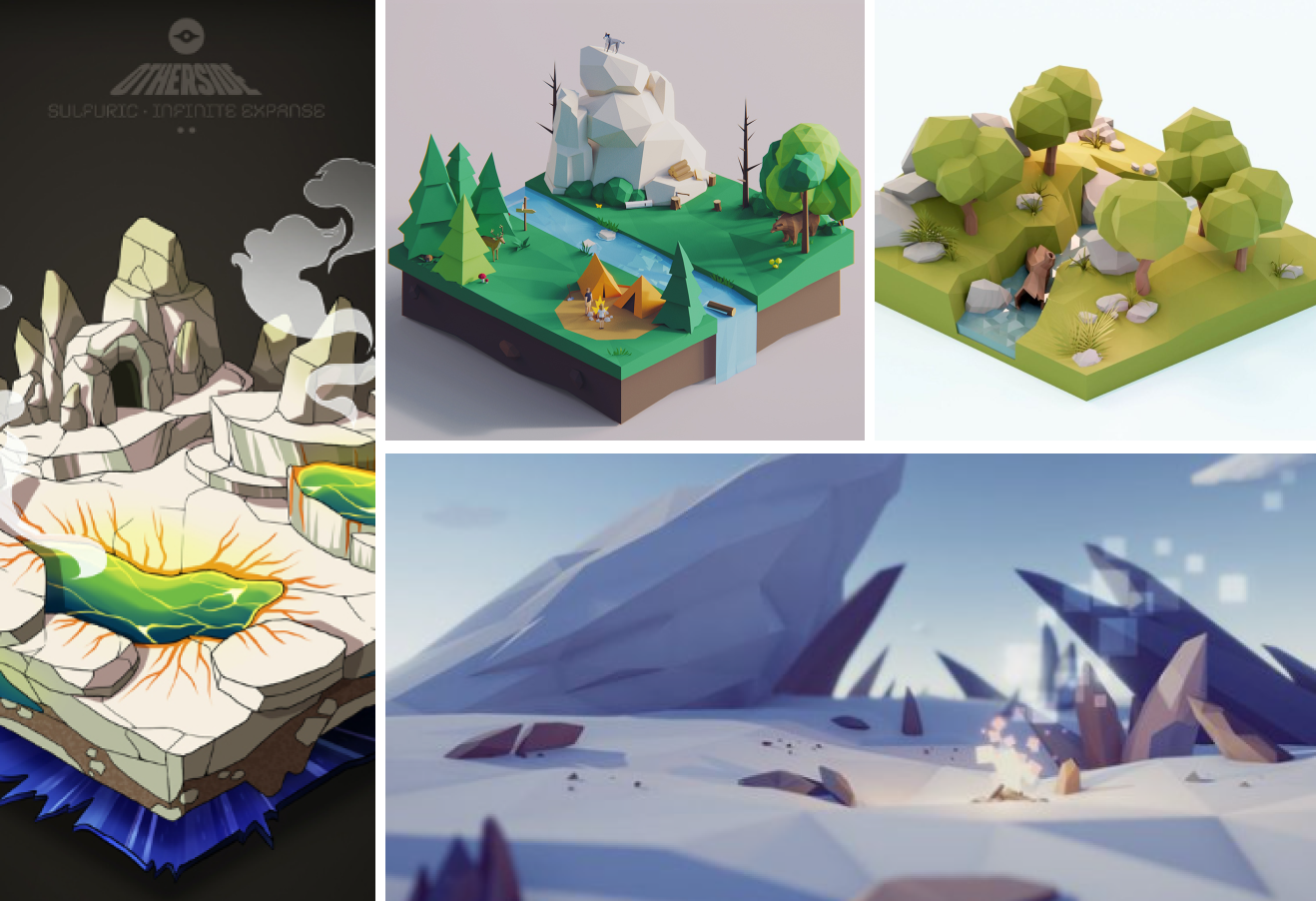
OTHER SIDE
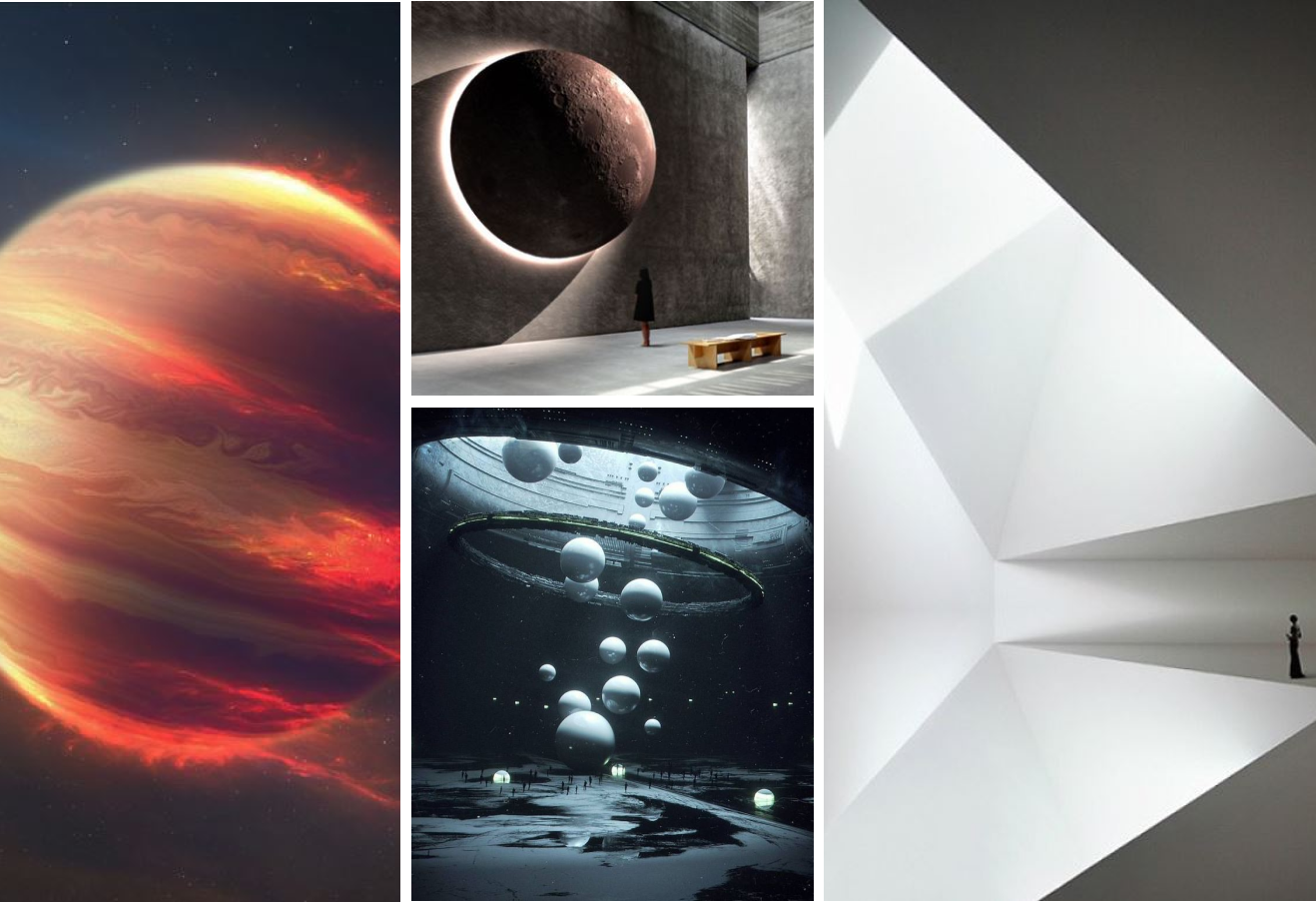
PLANETS

RENAISSANCE
Storyboarding
Every VR application is a spatial journey. To define the steps of the musea's spatial journey, I have asked what actual scenes and spatial elements will appear in the journey and how these objects will be utilized in different steps of the experience.
FINAL DESIGN
A virtual gallery that brings a variety of realities together.
Entrance Space
The entrance space is the starting point of the exhibition. A monolithic portal in an infinite white environment attracts users to discover and enter through the gate with a vortex shader. Flying lines creates a sense of direction and guides users to move forward. The entrance space informs users about the basic locomotion method.


Main Lobby
The Main Lobby has a minimalistic spatial setting in order to put emphasis on portals of exhibition spaces. The floating UI monolith helps users to get informed about exhibitions, artists, collectors, and architects. Also through the monolith users can connect their crypto wallets. In this case, the main lobby hosts 3 different exhibitions and each exhibition has its own stylistic entrance portals. The Main Lobby also can be used as a gathering space for visitors to interact with each other.

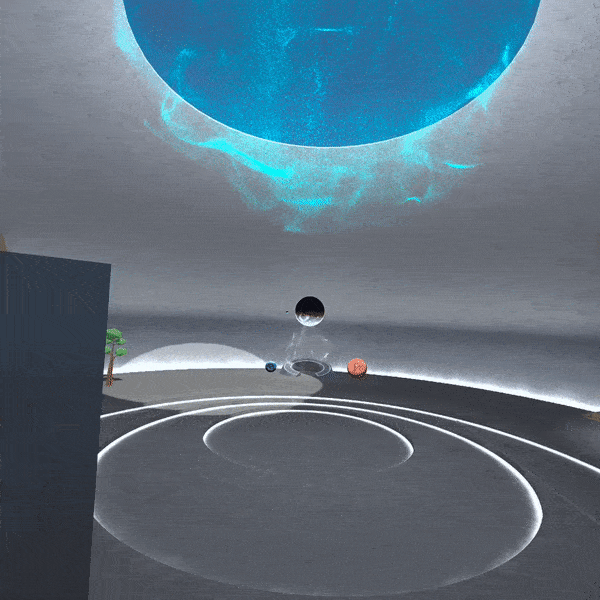
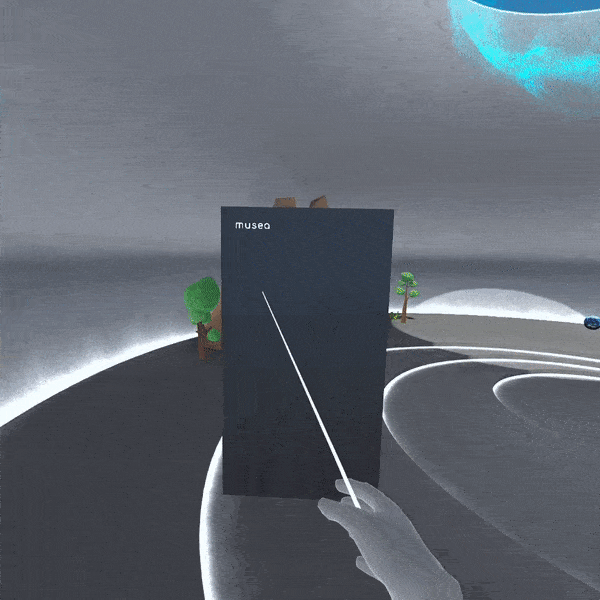
Other Side
The Otherside is inspired by an NFT series called Otherside. Otherside NFTs are a series of low poly digital environments. In this scenario, virtual environment design is based on one of the NFTs in the Otherside series. It has UI elements that allow users to explore other pieces of the series and connect their wallets and buy the NFT.
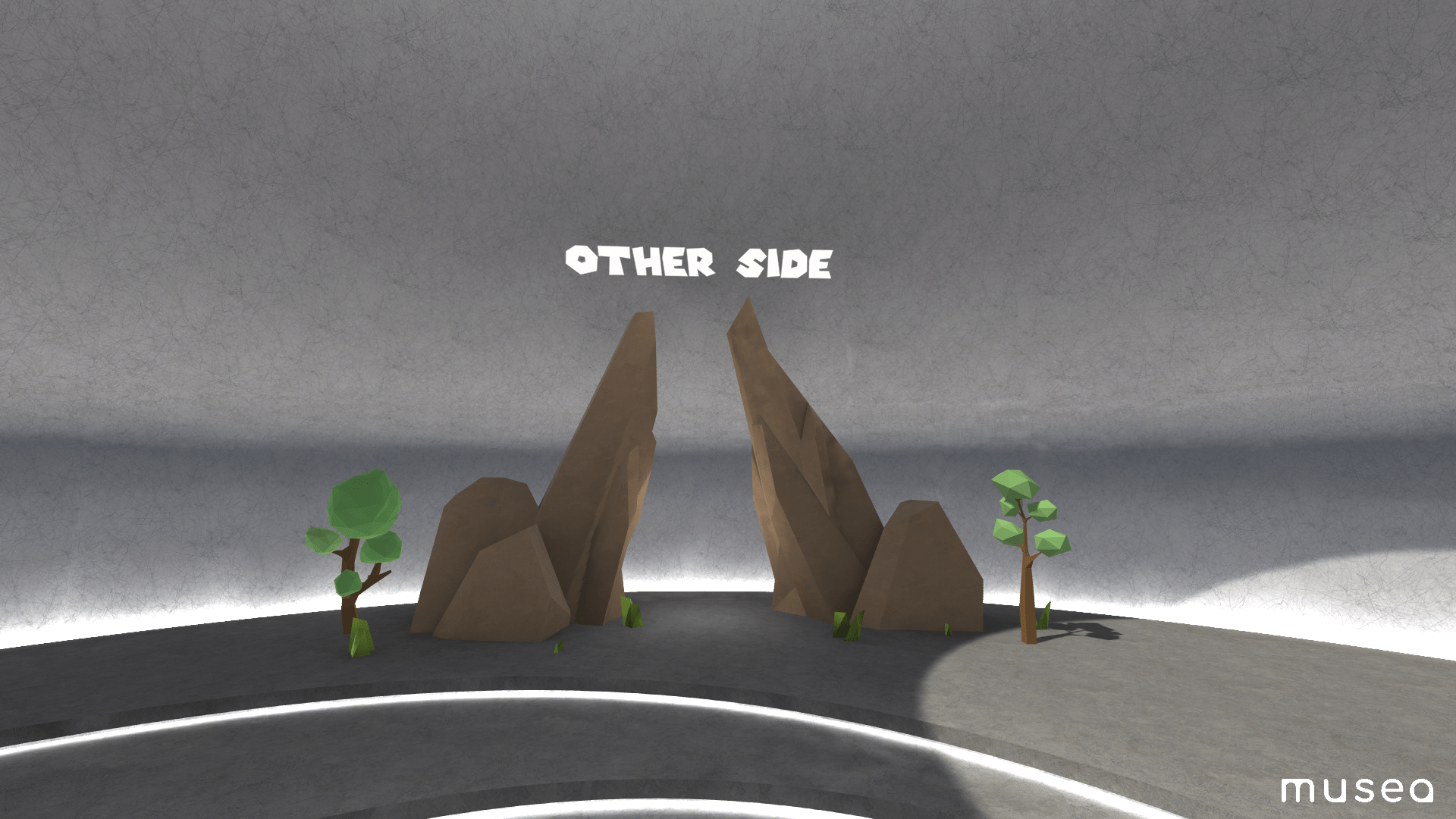

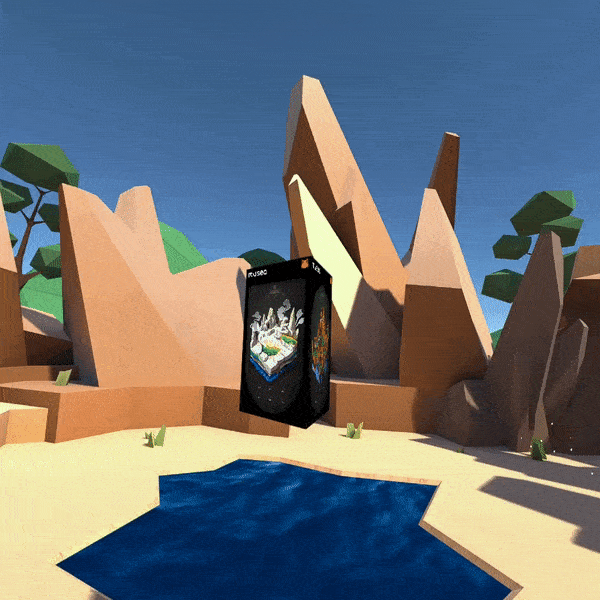
Planets
Planets consist of realistic 3D planets as NFTs. The exhibition setting allows users to see and interact with orbiting planets in a futuristic environment. UI elements help users to get more information about planets and allow users to manipulate them.


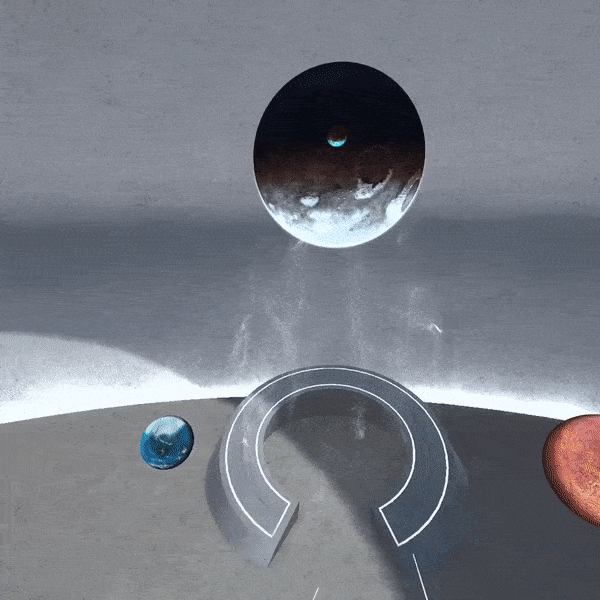
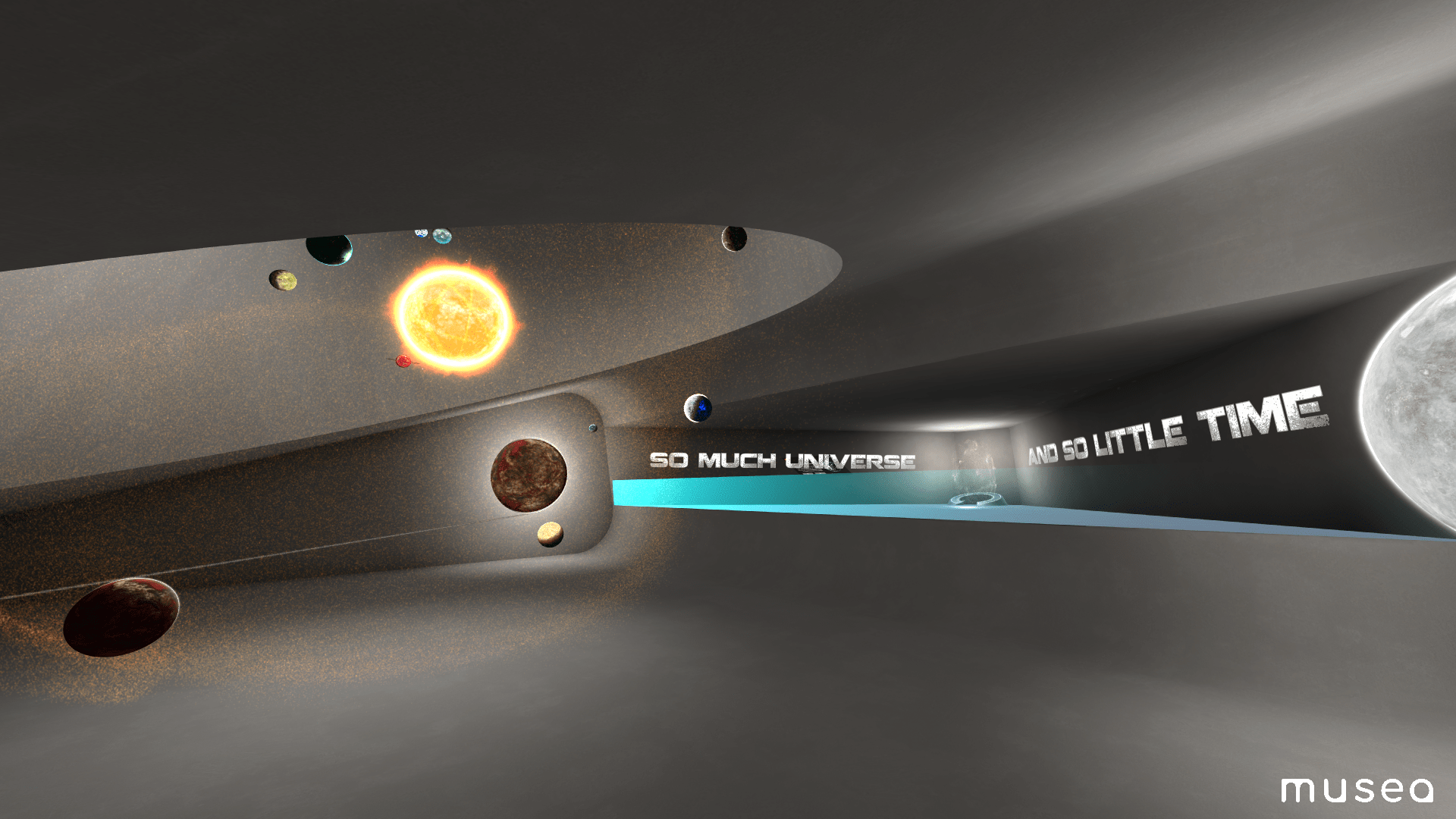
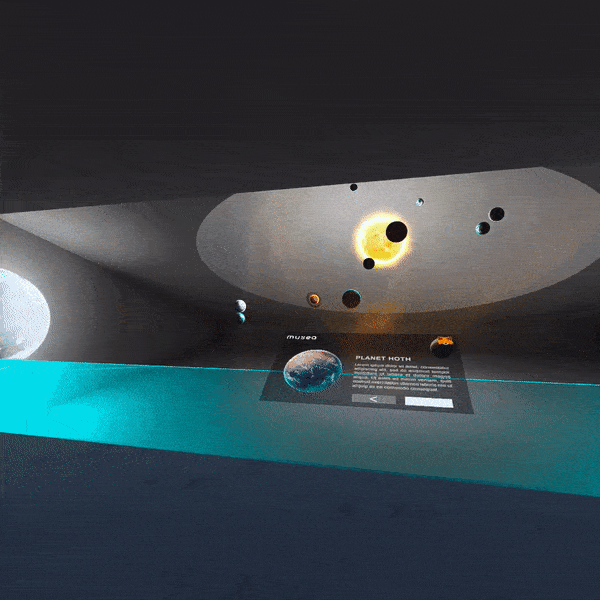

Renaissance
Renaissance has more classical taste and spatial setting than other exhibitions. Renaissance consists of classical sculptures with high-tech add-ons. Every sculpture has hidden UI cards that simply inform users about the artwork. Artworks have been animated with several VFX and shaders.
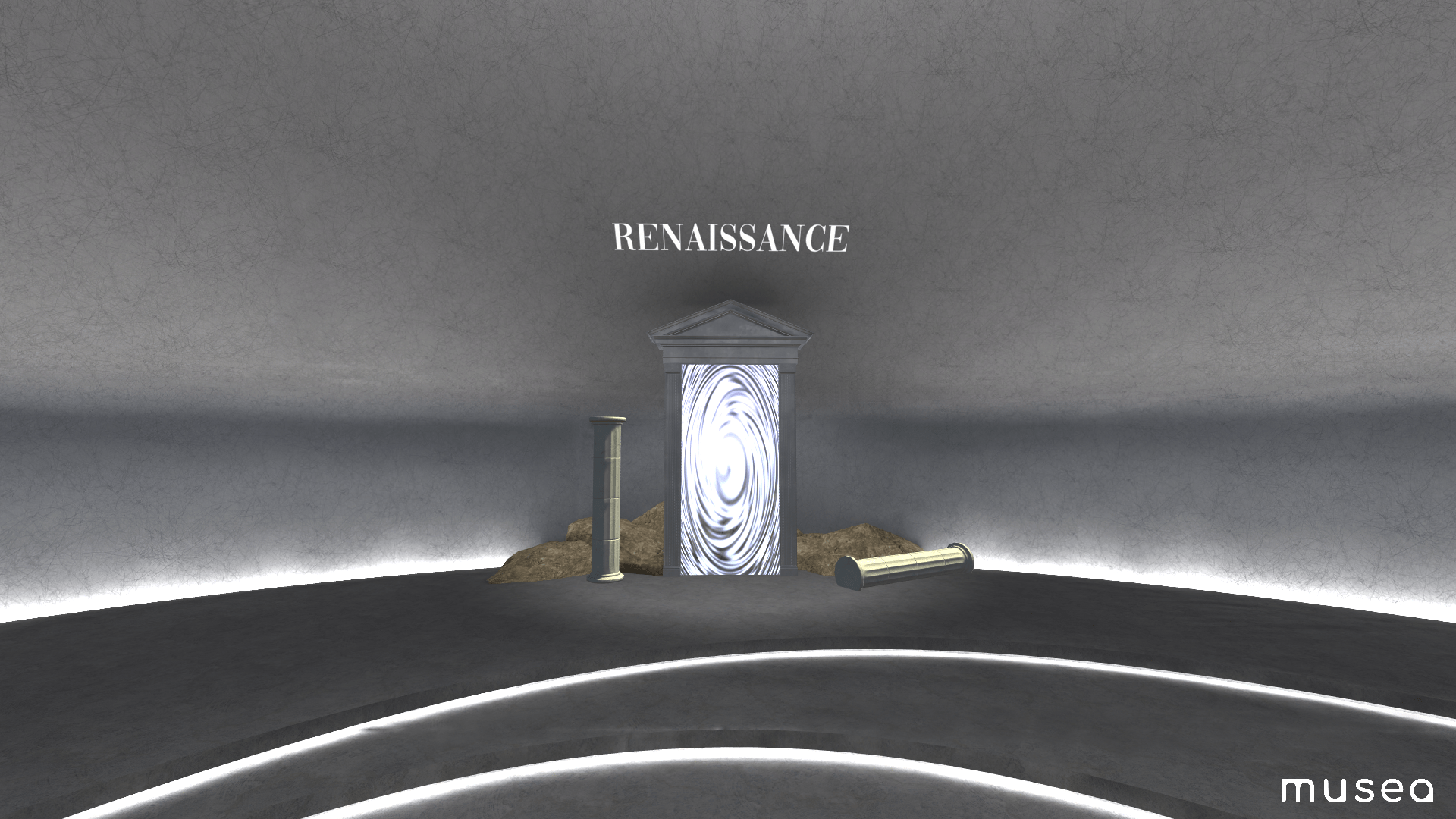





RETROSPECTIVE

Onboarding plays a critical role in persistent user engagement and a satisfying experience. I tried to accomplish an onboarding experience by utilizing entrance space and some UI elements, however, onboarding efforts can be more communicative and immersive.

One of the challenges in this case study was set up a universal solution for user interaction and flawless user experience. For this case, I have used prototype UI elements to emulate interactions. To deal with this challenge UI elements can be attached to the user by using an interactive hand gesture or wristband.

Musea can turn into an end-to-end experience and digital product with more scope and better competitor analysis, user research, and testing. In this case study, I explored some plausible scenarios in VR however musea has tremendous potential in Mixed Reality too. Meaningful and more satisfying UI elements could have been developed and added to the next versions.

